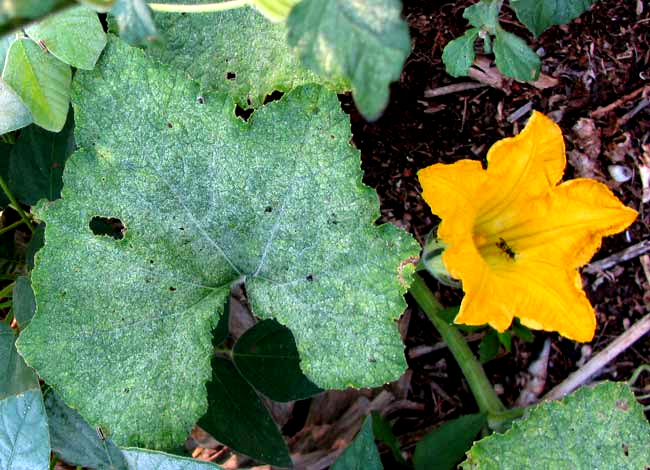 Squash plants are members of the Cucumber Family, the Cucurbitaceae. Further, they belong to the genus genus Cucurbita, which includes different kinds of squashes, gourds, pumpkins and zucchini. Except for zucchinis, those terms are not well defined. In the Temperate Zone squashes, gourds and pumpkins are easy to distinguish from one another, but in the tropics there's such diversity that the boundaries are blurred.
Squash plants are members of the Cucumber Family, the Cucurbitaceae. Further, they belong to the genus genus Cucurbita, which includes different kinds of squashes, gourds, pumpkins and zucchini. Except for zucchinis, those terms are not well defined. In the Temperate Zone squashes, gourds and pumpkins are easy to distinguish from one another, but in the tropics there's such diversity that the boundaries are blurred.
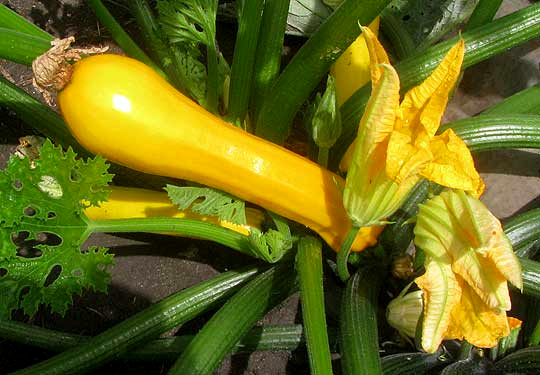
To Temperate-Zone people, most plants known as squash are Cucurbita pepo, one of the most important of all domesticated plants, and one producing many cultivars. While fruits of Cucurbita pepo may appear in many sizes, forms and colors, the flowers remain fairly constant among all the cultivars. The original Cucurbita pepo wild ancestor hasn't been found, and may be extinct.
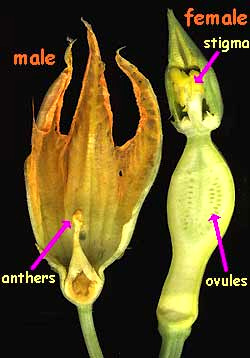
Squash plants bear separate male flowers and female flowers on the same plant. In other words, squash plants are monoecious. Usually the plant at first produces all male flowers, then female ones producing fruits begin appearing. Male and female blossoms broken apart to show their contents are compared at the right. You may want to review our Standard Blossom Page where terms like stigma and anther are clarified.
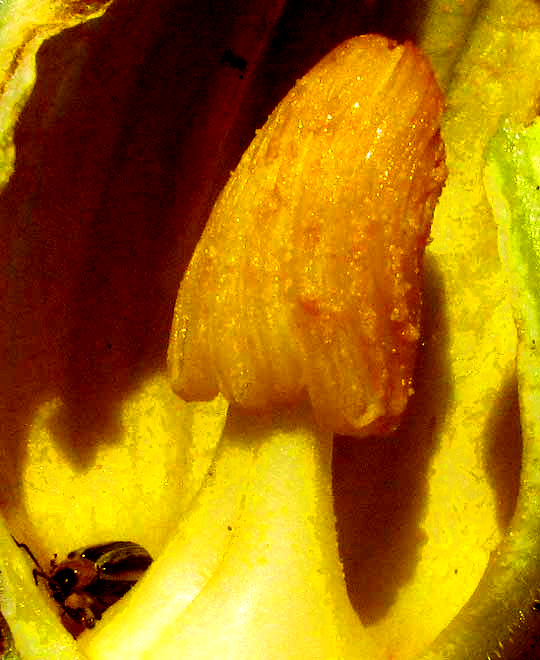
Something curious about the male flower is that the stamens' pollen-producing anthers and filaments are fused together. In the above picture you can see how the male flower's filaments form a teardrop-shaped item that's open inside. At the left is a close-up showing the neatly spiraling stigmas atop their thick-based, fused filaments.
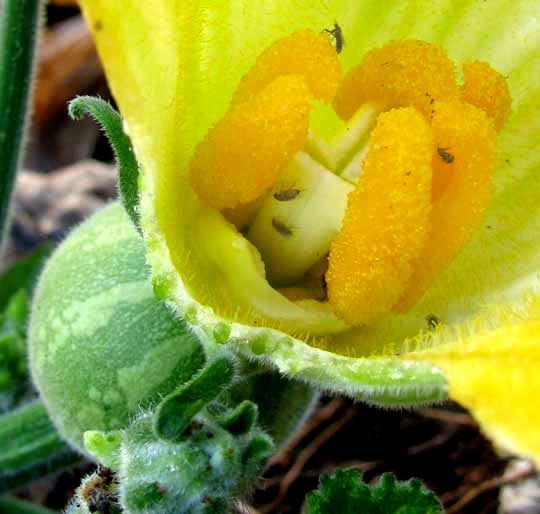
The picture at the right shows a partly broken open female flower with three impressive, vaguely U-shaped stigmas atop a distinctive 3-branched style. The style leads down to the ovary or developing fruit below the calyx and corolla. Notice the hairiness of the corolla's interior walls. This provides a foothold for pollinators
Since both the calyx and corolla arise above the flower's ovary, we would say that squash flowers have inferior ovaries. If the calyx and corolla arose below the ovary, the ovary would be superior, like our Standard Blossom.
Technically, squash fruits are of the berry type, though most people think of berries as something else entirely. Botanically, berries are fruits in which the ovary wall has ripened into a fleshy, often juicy and edible zone surrounding the seeds, so tomatoes are berries. Beyond that, squash fruits are of the "pepo" kind of berry, which means that it's a fleshy, watery fruit of the melon or cucumber type, with many seeds and a firm rind.